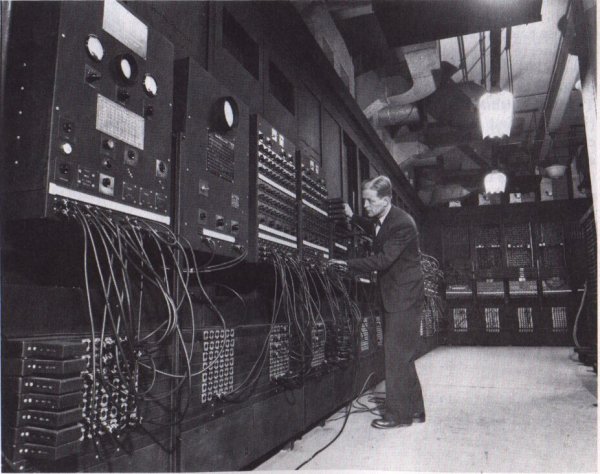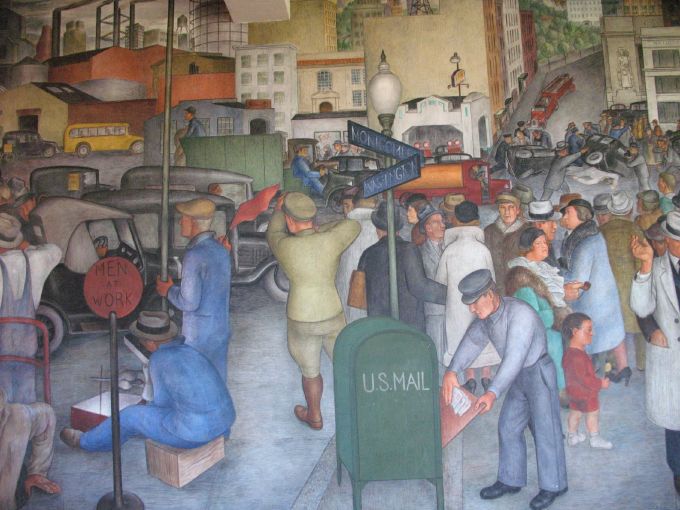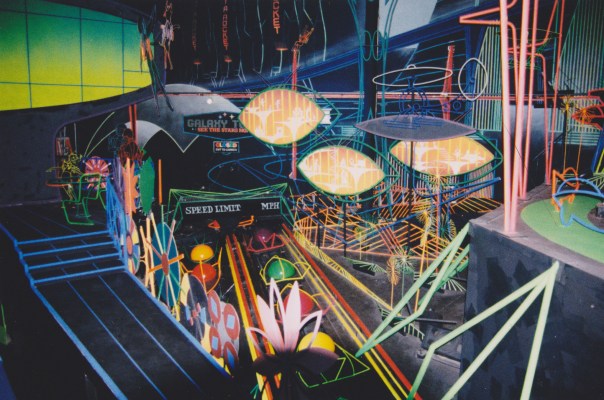Things seem to be changing faster than ever and life feels increasingly complex and fragmented.
We could be at peak complexity, but I think that life will, in fact, soon simplify. We are currently mid-phase between two eras: the pre- and post-digital age.
It isn’t unusual to think that you have understood “the power of the new” when you haven’t. We thought that the beauty of the MP3 format was its storage capability, when in hindsight it was about streaming every piece of music ever made. We thought that the wonder of the mobile phone was making phone calls anywhere, when in fact it was a personal gateway to the internet.
My favorite story of all is about the way in which we originally misunderstood electricity. It didn’t change businesses overnight. It took around 20 years for people to understand that it wasn’t a question of embellishing existing processes, but rebuilding them from scratch.
For electricity’s first decade, factory owners kept everything much the same. Electrical lighting made employees more efficient, working longer hours and enjoying safer, quieter working environments. Electricity led to decent yet unremarkable improvements.
It was only 20 years later that factories were transformed. It dawned on factory owners that machines could be arranged in new ways. Factories could make products more efficiently with fewer workers. Later still, it became clear that what electricity changed was everything.
When applied at the core of the business, it meant that a factory could move away from sources of power and locate itself closer to ports. Businesses could make new things. In short, electricity was to be used not just to improve a company’s efficiency, but to transform it.
So, we need to see the world in these three phases: before a full immersion of digital communications technology; when such technologies have faded into the background; and the mess between the two.

Photo courtesy of Flickr/John Morton.
Pre-digital age
It’s easy to remember this age as a time where devices had just one function. It was where media was physical, and where technologies lived alongside and in parallel to each other, but rarely intertwined. Retail was either in-store or via home shopping. Media channels were labelled after the singular device we consumed them on: TVs, newspapers, magazines, radio.
It may not have seemed like it at the time, but in retrospect, life was simple. Progress was steady but largely linear. Of course, things changed: we moved from VHS to DVD; cassettes fell to the compact disc; companies offered to sell products “direct.” These, however, were comparatively small changes. They didn’t change the retail landscape or logistics supply chain. Rights management and the management of intellectual property stayed as-was.
Companies were arranged around production and products. Demand was stoked by advertising and marketing. Attention was abundant, but information was scarce.
At first, the pre-digital age evolved slowly. Products became digitized. Photos became bits. Knowledge moved from encyclopedias to Wikipedia. The phone book became an online directory. Printed magazines became websites.
This first age was all about physical products becoming digital. It led to creative destruction in retail, manufacturing and distribution, which is where we are now: the mid-digital age.

Photo courtesy of Flickr/Esther Vargas.
Mid-digital
This is a period that straddles the age where digital is just becoming accepted into the mainstream, and the age where digital is fully immersed into our society.
Mid-digital represents an age where the BBC won’t play certain content in the U.K. because global digital rights have not been cleared. It’s where some buses only accept cards, and some only cash.
In this age, I pay for media with my (undervalued) attention, because micropayments are not yet working.
It’s where headlines featuring Trump or Apple rule the world, because eyeballs pay the bills.
To watch TV, I need to select the input device and then an app or channel, rather than just navigate by show. TV itself is beloved by advertisers, who focus on the medium rather than just the message; they care about when, where and how their ads are served. The audience, on the other hand, couldn’t care less.
We have retailers that won’t accept the collection or return of online goods in real stores. They are being killed off by companies like Amazon and a multitude of smaller eBay-based retailers.
Amazon wins by scale, whereas the niche eBayers simply need a rented locker from which to run their world-beating e-commerce operation. In this age, as exemplified by Amazon — with its all-conquering ease of use (including in self-publishing, e-books and web hosting); its flexibility; and its reluctance to pay its operatives no more than is legally acceptable, retail as we know it is about to die.
This is because the next shift is the one that really changes everything.

Photo courtesy of Flickr/Will.
Post-digital
Like pre-digital, nobody will think of “digital” in this age. The concept of it will move into the background and, much like oxygen or electricity, we’ll understand digital to be transformative yet irrelevant. There will be no more Chief Digital Officers in the same way that a Chief Electricity Officer doesn’t exist today.
In the post-digital age, digital technology will be a vast, quiet element forming the seamless backbone of life. The internet will be a background utility, noticeable only in its absence. Smart homes will work. Video will follow us around. Content will be paid for… all seamlessly and effortlessly.
We will no longer talk of TV versus online, or mobile versus desktop. Retailers won’t consider online-versus-physical as a divide of merit; they will just celebrate sales. Advertising will work around people, seamlessly telling sequential stories to move people to purchase. Content won’t care about national boundaries; even contemporary notions like currency or language will become less central to life.
People will be born truly digitally native. Parents won’t feel as anxious as they currently do regarding their children using these technologies. Kids will instinctively use them as babies, and continue to develop and nurture them as they grow alongside technology. They will be in safe environments, locked down by huge multinational publishers who track their customers’ every move.
These publishers and vendors will be bigger than governments. They will be the holders of data and the arbiters of mass behavioral change. Governments will be subservient to their needs (for insight into citizen activity, as payment gateways and much more) rather than the other way around.
Manufacturing will be just-in-time. Products will be made to order and shipped by autonomous vehicles. Replenishment is either handled automatically or by the press of a network-connected button.
Of course, while this automation seems to make the post-digital world feel much more frictionless, it is far from a panacea. We will all be working for ourselves, as freelancing and the gig economy becomes commonplace. Those running businesses will benefit from weakened governments, hampered by lower tax receipts through complex financial structures. The self-employed might have even fewer opportunities for social mobility, as competition comes from every corner of the world and working 24 hours a day offers only slim pickings to the even most dedicated.

Perhaps the most blurred line will be that of the real and the virtual. Our sense of reality, of time and place, will be the most complex for us to understand. Virtual headsets as we currently know them are simply interim technologies. The virtual will present itself in screens all around us. Places of physical public congregation will continue to die away as our virtual lives become the safer, more comfortable and more intimate place to be.
The opportunity is clearly for people and businesses to connect the current, mid-digital era to that which is coming. Although disruption will be significant, it will not happen in one day. We are creatures of habit, and will move to the opportunities posed in the post-digital era when they become socially and commercially advantageous. But, in the same way that people predicted videophones only for that technology to be completely overtaken by FaceTime and Skype, the vision of a post-digital era is still somewhat hazy, and nothing is definite. You would never have bet on the total demise of Nokia, the pre-eminent supplier of mobile phones around the world, a decade ago.
So, as we move from the mid- to the post-digital era, the advice is simple. Prepare for eventualities. Ensure that your business is culturally prepared for what’s to come. Consider extremities. Be aware of the bleeding edge. Leave nothing off the table. Above all, be commercially ferocious. As we all become embodiments of a permanently available, always-on, multi-faceted marketplace, please remind yourself of how electricity changed business and, by extension, society: It didn’t really change the effect, but it totally changed the cause.
